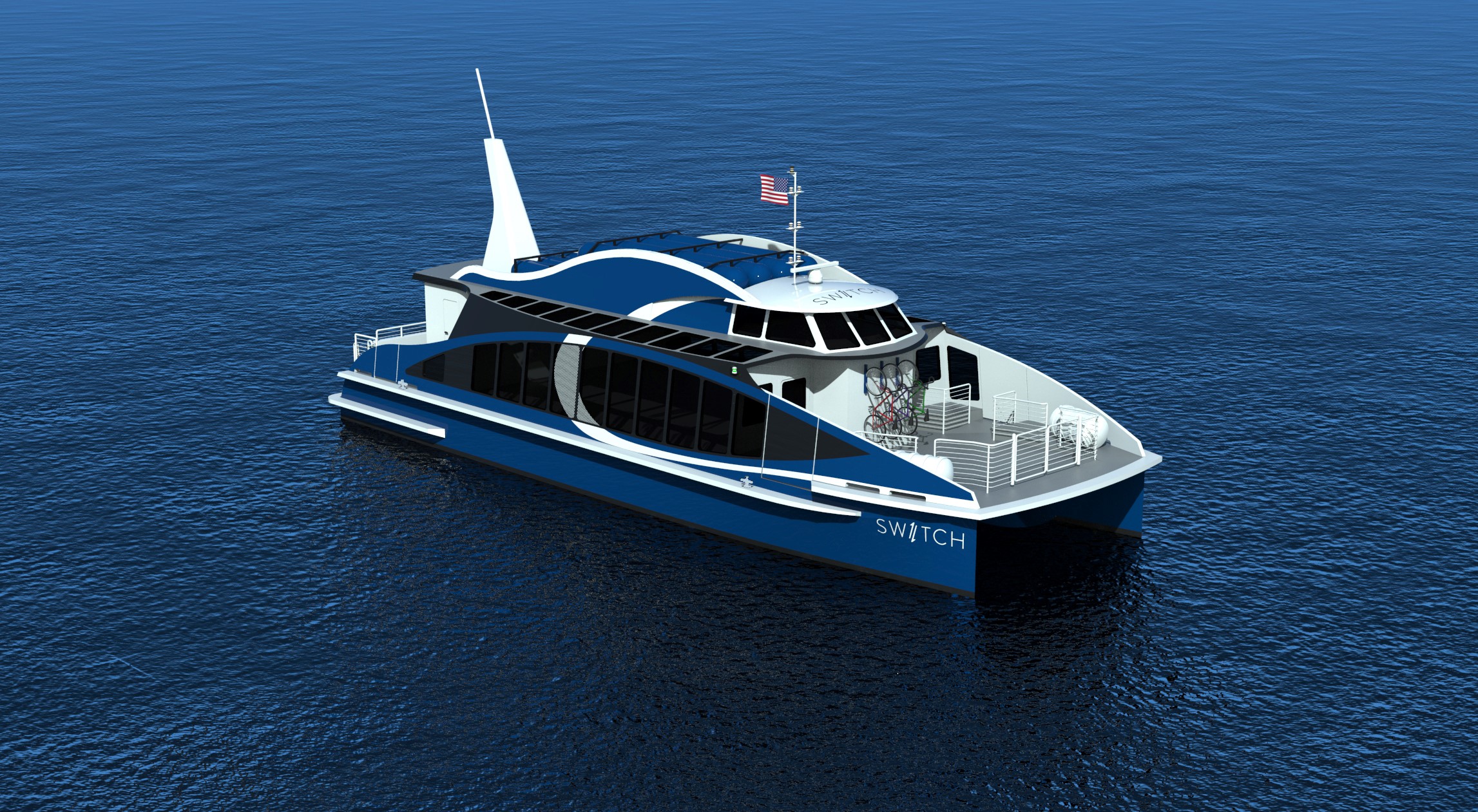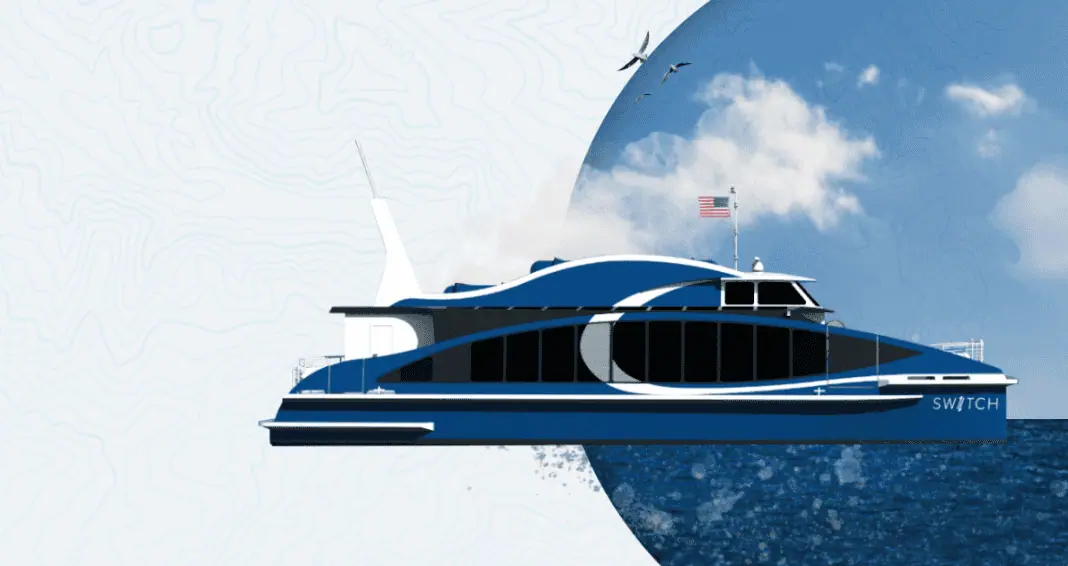A ferry that only emits water transporting people across waterways? This will now be possible thanks to Cummins hydrogen fuel cells that are being integrated into North America’s first commercial hydrogen fuel cell powered, zero emissions ferry (ZEF). Quiet and emissions free, the vessel, named “Sea Change,” marks another crucial milestone in the commercialization of zero emissions marine vessel power.
The 70-foot, 75 passenger high-speed ZEF will be the flagship for a planned future fuel-cell powered fleet, transporting commuters around the bay of San Francisco, California (U.S.). It will also demonstrate and test the potential of commercialization of fuel-cell powered marine vessels to the global maritime industry.
How It Works
With a powertrain designed by Golden Gate Zero Emission Marine, the Sea Change is powered by Cummins’ 360kW fuel cell and can reach speeds up to 22 knots. The fuel cells are supplied with hydrogen from storage tanks creating electricity to run the electric motors and turn the vessels propellers, generating the ferry’s movement. With the ZEF only producing water and electricity as a by-product, it’s 100% emissions free.

Fuel cells are an attractive solution for decarbonization of marine vessels for several reasons. They are zero emissions, silent and scalable. Plus, they are flexible because the power from the fuel cells is transported through wires, the fuel cells can be placed almost anywhere on the vessel. In the case of the Sea Change, the fuel cells are placed in a room at the back of the main cabin, while the hydrogen storage tanks are up at the top deck.
The Sea Change is owned by SWITCH Maritime, a North American impact investment company working to create America’s first fleet of zero emission marine vessels. This project is also partially funded by a $3 million grant from the California Air Resources Board, administered by the Bay Area Air Quality Management District, that comes from the California Climate Investments initiative. The Sea Change is in the final phases of construction and set to begin sea trials this year.
Power at the Port
With governments around the world developing ambitious goals for carbon emissions and a focus on the commercial maritime industry, this is an exciting step towards reducing carbon emissions and meeting the need for cleaner mobility solutions globally.
Cummins is not stopping with zero emission ferries. The company’s alternative power solutions are set to power applications across the port ecosystem. This includes battery electric terminal tractors and six Class 8 fuel-cell powered drayage trucks that will transport goods from ships to warehouses in Southern California. In addition, Cummins is designing and building containerized hydrogen fuel cell generator systems that will supply both stationary and portable port power.
Learn more about how Cummins is decarbonizing the maritime industry and moving people and goods around the world sustainably.












